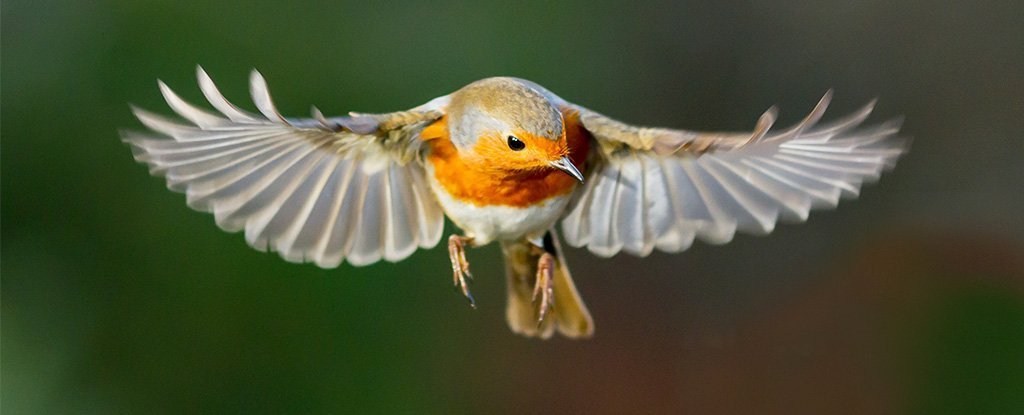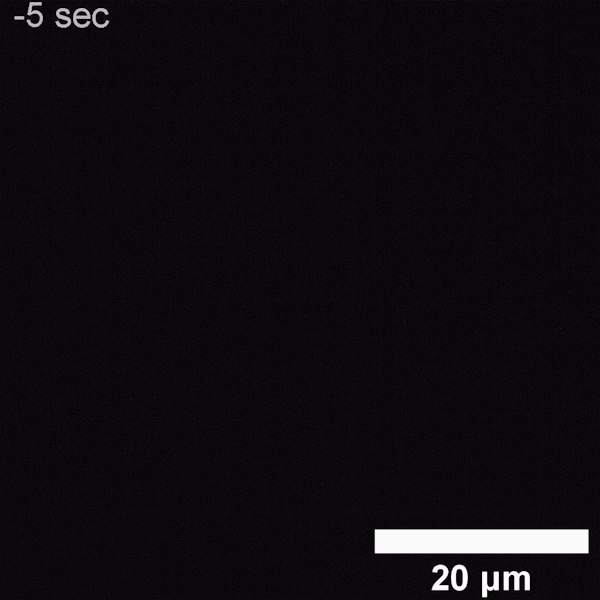
Posted on 01/11/2021 11:56:04 AM PST by Red Badger

Seeing our world through the eyes of a migratory bird would be a rather spooky experience. Something about their visual system allows them to 'see' our planet's magnetic field, a clever trick of quantum physics, and biochemistry that helps them navigate vast distances.
Now, for the first time ever, scientists from the University of Tokyo have directly observed a key reaction hypothesised to be behind birds', and many other creatures', talents for sensing the direction of the planet's poles.
Importantly, this is evidence of quantum physics directly affecting a biochemical reaction in a cell – something we've long hypothesised but haven't seen in action before.
Using a tailor-made microscope sensitive to faint flashes of light, the team watched a culture of human cells containing a special light-sensitive material respond dynamically to changes in a magnetic field.

400152132 A cell's fluorescence dimming as a magnetic field passes over it. (Ikeya and Woodward, CC BY 4.0)
The change the researchers observed in the lab match just what would be expected if a quirky quantum effect was responsible for the illuminating reaction.
"We've not modified or added anything to these cells," says biophysicist Jonathan Woodward.
"We think we have extremely strong evidence that we've observed a purely quantum mechanical process affecting chemical activity at the cellular level."
So how are cells, particularly human cells, capable of responding to magnetic fields?
While there are several hypotheses out there, many researchers think the ability is due to a unique quantum reaction involving photoreceptors called cryptochromes.
Cyrptochromes are found in the cells of many species and are involved in regulating circadian rhythms. In species of migratory birds, dogs, and other species, they're linked to the mysterious ability to sense magnetic fields.
In fact, while most of us can't see magnetic fields, our own cells definitely contain cryptochromes. And there's evidence that even though it's not conscious, humans are actually still capable of detecting Earth's magnetism.
To see the reaction within cyrptochromes in action, the researchers bathed a culture of human cells containing cryptochromes in blue light caused them to fluoresce weakly. As they glowed, the team swept magnetic fields of various frequencies repeatedly over the cells.
They found that each time the magnetic field passed over the cells, their fluorescence dipped around 3.5 percent – enough to show a direct reaction.
So how can a magnetic field affect a photoreceptor?
It all comes down to something called spin – an innate property of electrons.
We already know that spin is significantly affected by magnetic fields. Arrange electrons in the right way around an atom, and collect enough of them together in one place, and the resulting mass of material can be made to move using nothing more than a weak magnetic field like the one that surrounds our planet.
This is all well and good if you want to make a needle for a navigational compass. But with no obvious signs of magnetically-sensitive chunks of material inside pigeon skulls, physicists have had to think smaller.
In 1975, a Max Planck Institute researcher named Klaus Schulten developed a theory on how magnetic fields could influence chemical reactions.
It involved something called a radical pair.
A garden-variety radical is an electron in the outer shell of an atom that isn't partnered with a second electron.
Sometimes these bachelor electrons can adopt a wingman in another atom to form a radical pair. The two stay unpaired but thanks to a shared history are considered entangled, which in quantum terms means their spins will eerily correspond no matter how far apart they are.
Since this correlation can't be explained by ongoing physical connections, it's purely a quantum activity, something even Albert Einstein considered 'spooky'.
In the hustle-bustle of a living cell, their entanglement will be fleeting. But even these briefly correlating spins should last just long enough to make a subtle difference in the way their respective parent atoms behave.
In this experiment, as the magnetic field passed over the cells, the corresponding dip in fluorescence suggests that the generation of radical pairs had been affected.
An interesting consequence of the research could be in how even weak magnetic fields could indirectly affect other biological processes. While evidence of magnetism affecting human health is weak, similar experiments as this could prove to be another avenue for investigation.
"The joyous thing about this research is to see that the relationship between the spins of two individual electrons can have a major effect on biology," says Woodward.
Of course, birds aren't the only animal to rely on our magnetosphere for direction. Species of fish, worms, insects, and even some mammals have a knack for it. We humans might even be cognitively affected by Earth's faint magnetic field.
Evolution of this ability could have delivered a number of vastly different actions based on different physics.
Having evidence that at least one of them connects the weirdness of the quantum world with the behaviour of a living thing is enough to force us to wonder what other bits of biology arise from the spooky depths of fundamental physics.
This research was published in PNAS.
Quantum Ping!.....................
Anybody who lives near the coast and has seen hundreds of Seagulls suddenly appear out of nowhere while you are eating lunch outside knows this..................
Thanks Red Badger.

Thanks Red Badger. I wonder if this is related to the flutters in the magnetic field? /rimshot
|

My dog’s compass must be broke...............................
This makes it sound like obvious anomalies should result from MRI use.
We’ve only known this for about 10,000 years.
Thanks for the post - that was interesting.
That would explain the flashes on LSD while listening to Black Sabbath on headphones......................or so I’ve heard..............
The swallows return to Capistrano.
The buzzards return to Hinckley.
The chickens return to the Capitol.
Ping!....................
I’ve had several MRI’s with no side effects.................
I’ve had several MRI’s with no side effects.................
I’ve had several MRI’s with no side effects.................
I’ve had several MRI’s with no side effects.................
I’ve had several MRI’s with no side effects..................................


I have thought quantum uncertainty allows free will to exist, for some time.
LOL!....I hadn’t seen that one in years!....................
We took our 10 y-o grandson to DQ a couple of weeks ago for lunch.
We took the meals to a small bayside park to eat.
There were no birds anywhere.
After about 5 minutes there were hundreds of seagulls trying to snatch our food!......................
Possibly the Creator of the universe had something to do with it? Ya think
Disclaimer: Opinions posted on Free Republic are those of the individual posters and do not necessarily represent the opinion of Free Republic or its management. All materials posted herein are protected by copyright law and the exemption for fair use of copyrighted works.